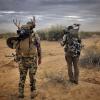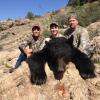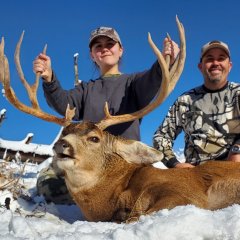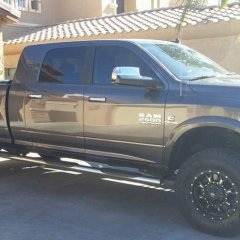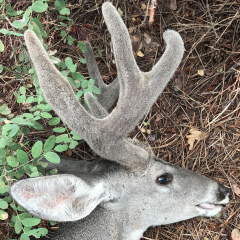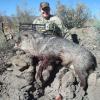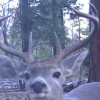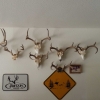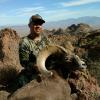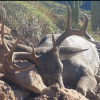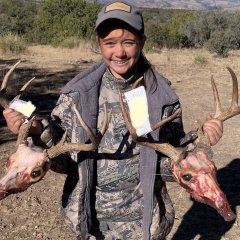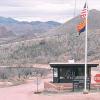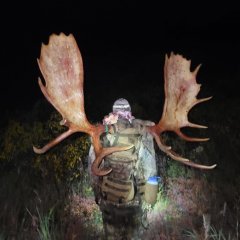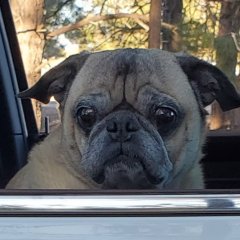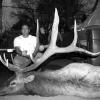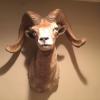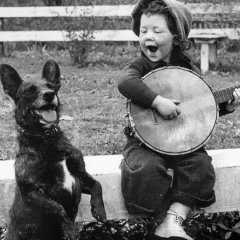Leaderboard
Popular Content
Showing content with the highest reputation on 09/22/2020 in Posts
-
11 pointsWell after 10 Days I finally got it done. Shot him around 5:30 as he and 4 cows came into water. My brother in law also had the same tag (The unit with the most archery tags) unfortunately had to leave Sunday morning. Not the biggest bull I saw but, After hunting 14 days in 11m in 2018 and eating tag soup this bull will do.
-
10 points
-
3 pointsI was lucky enough to pack out a cow this past Friday right after I got my MR Pinter in. I have to say this pack is awesome. I've packed out three cows prior using my Badlands 2200 and never knew what I was missing out on. The meat shelf worked on great on the MR. First trip was both shoulders, second trip was one hindquarter, third trip was a hindquarter/back straps/tenderloins and misc meat. No issue at all.
-
3 pointsComplete BS they keep this closed. That fire has been out for months. It rained on it several times since then very hard. 475 tags pushed into 1/3-1/4 of the unit. Sounds like a fun time....
-
2 pointsMy Archery bull .Unit 18A,public land. So I hired James Fleming to do this hunt with. I have been talking to him since before the draw.A few thought I was crazy burning 9pts on a marginal limited opportunity area. I went with a gut feeling and it paid off.James knows the area like no one else.Day 1 was slow with only a few elk spotted and no shooters. sat water for 8 hours in middle of day till evening with only javelinas coming in. Day 2 up at 4 and into another blind for barely an hour when I received text bull spotted. James picked him up at 4 miles away and it appeared he wasn't moving to another zip code. He then disappeared into a sea of junies . we estimated where he might be and made the trek. About noon we lucked out and he bugled. We had to assume it was him as they weren't active calling at all. we estimated him to be around 500 yards away so we moved in a couple of hundred yards where we would remain on the ground for 4 plus hours. Around 5 he bugled once and on went the sneekee feet and we closed to about a hundred yards. we hung the cow decoy in a cliff rose, I set up and James got behind me about 20 yards. 2 cow calls set him off tearing up a tree(sounded like a train breaking limbs).he did this for 15 minutes without bugling and stopped. I was shaking like a leaf. More mews and I could hear him coming in on a rope. Still having not seen him his swords appeared( knew it was him at that second )above a juniper in front of me. he turned to get around the juniper and downwind and as he was walking in to a 3 foot shooting lane I was drawn and calm. I was preparing to shoot him walking but he froze with vitals exposed to look at the decoy . I released arrow and center punched him at 30 yards. At this point I practically collapsed.It was very warm and I guess years of frustration and missed opportunity were coming into into my thoughts.The arrow was complete pass through 4 blade wacem. we waited about 20 minutes to start the recovery. quite a bit of blood at first...but it tapered off.Fortunately his tracks were easy to follow in the dirt. This beast made it 500 yards and expired. James was as excited as I was. after lots of hugs and high fives we set about the work. we carried what we could.hung the rest and got back to camp at 430 Am. we slept for a couple of hours then made the 3 mile trek to pack out the rest.
-
2 pointsHere is my 2020 archery bull, I believe they are still in the pre-rut. Opening day I passed on a 3x3, then Saturday I missed a 7x7 had to estimate his range and just grazed him. Sunday morning I was after a 6x6 that was with a 4x4 but they gave me the slip. A hour after that I let a spike and small 4x4 walk right past me at 18 yards. Wasn’t sure if I made a mistake on that one. Monday and Tuesday I headed home to fix my house air conditioner. Wednesday morning I headed back up. Got to camp and unloaded the quad to head back to a small water hole where I missed the 7x7. Got all set up around 5pm. Tried calling to locate the bulls and nothing. So I sat till about 6:10pm and from a distance I seen some cows coming, told myself there has to be a bull with them and sure enough he pops out and starts to bugle. Then from a distance another bull bugles. Then the cows come to the small water and before I know it the bull is there. I draw back while one cow is staring at me then the bull lifts up and looks at me. I release the shot and wasn’t sure if I hit him well. He runs and I’m cow calling him, he stops about 50 yards and in about 10 seconds he is down. So I call my 2 friends who where up there with me on opening weekend and give them the news. Now the fun begins while it’s starting to get dark. I finish about 10pm and back at camp about 10:50pm. Talk about a long cold ride back to on the quad. Thanks Austin Nagel, Steve Holowell , and James Guin
-
2 pointsSOLD - thank you all for your input whether it makes sense or not. Don't go by ''that's what I heard''. Kudos to the ones that know what they are talking about and have actually done their OWN homework. Those that know are great outdoorsman. I can assure all of you that this was a perfectly legal find. So no need to keep rewinding and eating more popcorn. Thank you all again for your input.
-
2 pointsPoint guard isnt once in a lifetime. You get your points back once then next tag you have to use. After you use your next tag, you can use point guard again.
-
2 pointsIf your not interested in finding someplace else to hunt point guard it. Im sure someone would like to have the tag. Like you said there are still plenty of places open. I have the exact problem where I'm hunting. But looking at it as an opportunity to scout and hunt new area's and maybe some old stomping grounds.
-
2 pointsI just got home last night from helping a good friend in 3a/3c. The bulls were pretty vocal all but 1 morning, they would bugle until about 8-9 in the morning. They would start up again around 5-530 and call pretty well. they did not really have any interest in cow calls until this past Friday. We called a decent bull across a canyon Friday afternoon and he filled his tag with an easy 30yd shot. Fun hunt, looking forward to my 3c tag next year.
-
2 pointsRemi is sponsored by G5. He’s also shilled for wac’ems in the pass. I would never trust a paid Endorsement
-
2 points
-
1 pointI was doing some googling for something else and came across a site about how the Thunder River trail in the GC came into being. You might recall I've mentioned the Big Saddle Camp here a few times. Here are some snippets about it and the N. Kaibab deer. It's a bit of interesting history. -TONY The story of the Thunder River Trail would not be complete without fleshing out the role that the Churches played in its maintenance. Big Saddle Hunting Camp was built by Hayden Church in the 1920s. His son Jack, and Jack’s wife Mardean, took it over and operated it until the mid 1960s. They also owned the Buckskin Tavern on the state line between Kanab and Fredonia. Although their primary business was the Utah Parks Company, which had concessions to operate mule trips in Bryce, Zion and the North Rim, they hosted hunters and guided hunting trips out of their lodge and several cabins at Big Saddle Camp during the fall. The Big Saddle facilities are long gone. The smaller cabins were wrecked and burned in 1967. The main lodge was left standing but cut into three sections and moved years ago to its current location at the junction of U. S. 89a and Forest Service road 22 just southeast of Fredonia. It now forms the core for the house just to the southwest of the intersection there. The Churches operated pack trips into Thunder River from Big Saddle via the Little Saddle route, mostly after hunting season. Their best known wrangler was Walapai Johnny Nelson, whose father was sheriff at Kingman. Johnny also was well known as a heavy drinker. Mardean Church (1992) recalled, "A great guide, people loved him, but had to fire him and rehire 50 times a season." For years, Walapai Johnny maintained the stash of cookware at Cove Camp just down from the junction of Thunder River and Tapeats Creek. His inscription is in the rock shelter beneath the large boulder overlooking the roasting site just west of where the Thunder River Trail drops out of Surprise Valley to Thunder Spring. The Churches wintered their Utah and Grand Canyon horses and mules on the Esplanade until the mid-1960s. For decades their trail hands did the bulk of the maintenance and even made some improvements on the Thunder River Trail from the canyon rim to Cove Camp. Their hands even did most of the work on the Crazy Jug segment before it was abandoned in the 1950s. In 1965, Rell Little told me about getting the last of the cattle off the Esplanade sometime in the early 1960s. Another rancher named Johnny Vaughn, who also operated a cattle lease on the Kaibab Plateau, noticed that there were a fair number -- at least a truck load -- of feral cattle down there that they could occasionally see from the rim. Representing found money, they decided to go after them. This they did by taking a couple of docile cows out to Little Saddle, and wrangled them down onto the Esplanade via the Little Saddle Trail. In no time, the wild cattle congregated around the domesticated stock, and the wranglers were able to peacefully walk the entire lot out to the rim with the cows in the lead. They walked the lot right onto the truck without incident, and, the way he told me the story, drove right off to the packing plant to collect their reward. That was the end of cows on the Esplanade over in that country. David Hansen recalls Kanab in the early 1920's: walking down Main Street, you passed the drug store, and about the only people you would see would be "the old-time cowboys sitting in the sun, boots and Bull Durham tags out their pockets, telling how they worked for Grand Canyon Cattle Company." With an estimated deer population of 50,000 on the Kaibab, the Forest Service declared open season on deer in 1927 or 1928, he recalls. "Any hunter could get 3 bucks only for $5.00. But the deer were very poor and not edible. They had very unusual horns. They were considered trophies." He recalls attempting deer counts. "We could stop on a ridge on those western slopes, riding through there and whistle and holler and hundreds of deer would file out of a canyon," he said. When the Forest Service declared open season, the State of Arizona filed an injunction and sent deputy sheriffs to arrest the hunters. Forest Service personnel helped the hunters dodge the sheriffs. Finally, a cooperative agreement was reached that allowed hunting only in October and November and required a payment of $4.00 for an Arizona hunting license. Hunting camps were set up. Two on the east side of the Plateau, one at Kane Springs and one at South Canyon. Three camps on the west side, one at Ryan (checking station), one at Moquitch and one at Big Saddle. Big Saddle was against the rim of the Grand Canyon. A short walk from the camp was Crazy Jug Point, which was a spectacular view of the Grand Canyon. These hunts were very successful, being the first attempt at managing hunting. All hunters registered into a camp. A Forest Ranger and an Arizona Game Warden were in each camp. All the deer were checked out with a special tag. All guns were sealed when entering two checking stations, Ryan and Kane Springs, and unsealed at the Camps. This was a safety measure to keep hunters from shooting deer along the road. Horns were measured and carcass weighed and measured. The Camps were under Special Use Permits to provide tents, meals, and horses to the hunters, if they so desired, also guides were available. So the hunters could drive in and have all the accommodations that they wanted, which was rather primitive, but satisfactory. In 1929, the hunters came, everything was very prosperous, good cars, and they enjoyed their stay in the Camps, even after bagging their deer. The 1931 hunt was different because of the depression. A lot of hunters could see a difference in their pocket-books and they were anxious to get meat. After two years of controlled hunting, the deer were still not in good flesh, the average weight in bucks in 1931 was 1351bs., the average weight 10 years later, was 1801bs. By 1941 the forage had improved considerably. However, which is usually the case with winter loss, nature seems to solve the problem, along with hunting.
-
1 pointGiven my current condition with COPD, etc., I'm sure this will shock some of you, but I'd like you all to know that I volunteered for the vaccine trials for Covid-19, held here in the Glendale area. The vaccine was created in a Russian lab. I received my first shot today at 9:00 am, and it’s completely safe, with иo side effects whatsoeveя. I feelshκι χoρoshό я чувствую себя немного странно и я думаю, что вытащил ослиные уtr.
-
1 pointAmazing what a higher quality pack actually does for you. I try and explain it to everyone who owns badlands and eberlesucks. Until you actually take the plunge and try one, you honestly have no clue on the difference in comfort.
-
1 pointFinally getting some rain in 1. Had multiple stalks a day blown by crunchy ground and minimal shade. Or maybe I just suck at hunting. Anyway, damp ground, cloud cover, and 15 degrees cooler should change things.
-
1 point
-
1 point
-
1 point
-
1 pointThe poor guy at MH receiving the hate email from a customer who got exactly what he ordered:
-
1 pointGAME AND FISH NEWS Sept. 17, 2020 Deer, elk hunters: Register now for Chr onic Wasting Disease webinar Sept. 24 Arizona's deer and elk populations remain free of Chronic Wasting Disease (CWD) due to diligent surveillance efforts. PHOENIX — The Arizona Game and Fish Department (AZGFD) encourages all deer and elk hunters to view a live webinar Sept. 24 about Chronic Wasting Disease (CWD), a fatal wildlife disease that affects the nervous system of these animals. “What Hunters Should Know About CWD” is being presented by the Center for Infectious Disease Research and Policy (CIPRAD) and hosted by Nick Pinizzotto, CEO of a unified organization combining both the National Deer Alliance and Quality Deer Management Association. Arizona’s deer and elk hunters can register now for the webinar, which begins at 9:30 a.m. (Arizona time). The event will also be livestreamed on CIDRAP’s CWD YouTube channel. No cases of CWD were discovered in the 1,200-plus deer (mule and white-tailed) and elk that were harvested in Arizona and voluntarily submitted for testing in 2019. In addition to hunter submissions, AZGFD collects samples from across the state through partnerships with meat processors and taxidermists. AZGFD has been testing for the presence of the disease in Arizona since 1998. While CWD has been found in the neighboring states of Utah, New Mexico and Colorado, the disease has not been detected in Arizona. CWD has not been documented to cause disease in people.
-
1 point3 days and 20 hrs of windshield. Supposed to be mid 50’s and raining when I get there Saturday. That should get the bulls going.
-
1 point
-
1 pointThe region around Zane Grey's Cabin is a good place to start. The original location, of course.
-
1 pointNo idea on specific spots, but I know if I had an October cow tag in an unfamiliar unit that I would try to get up there a week or two prior to listen for bugles. Cruise around at night and early morning to various spots and listen for bugling elk. Easy way to locate general locations from a distance. Not a slam dunk, but there is a pretty fair chance that the elk will be int he same general spots during your hunt. Good luck!

